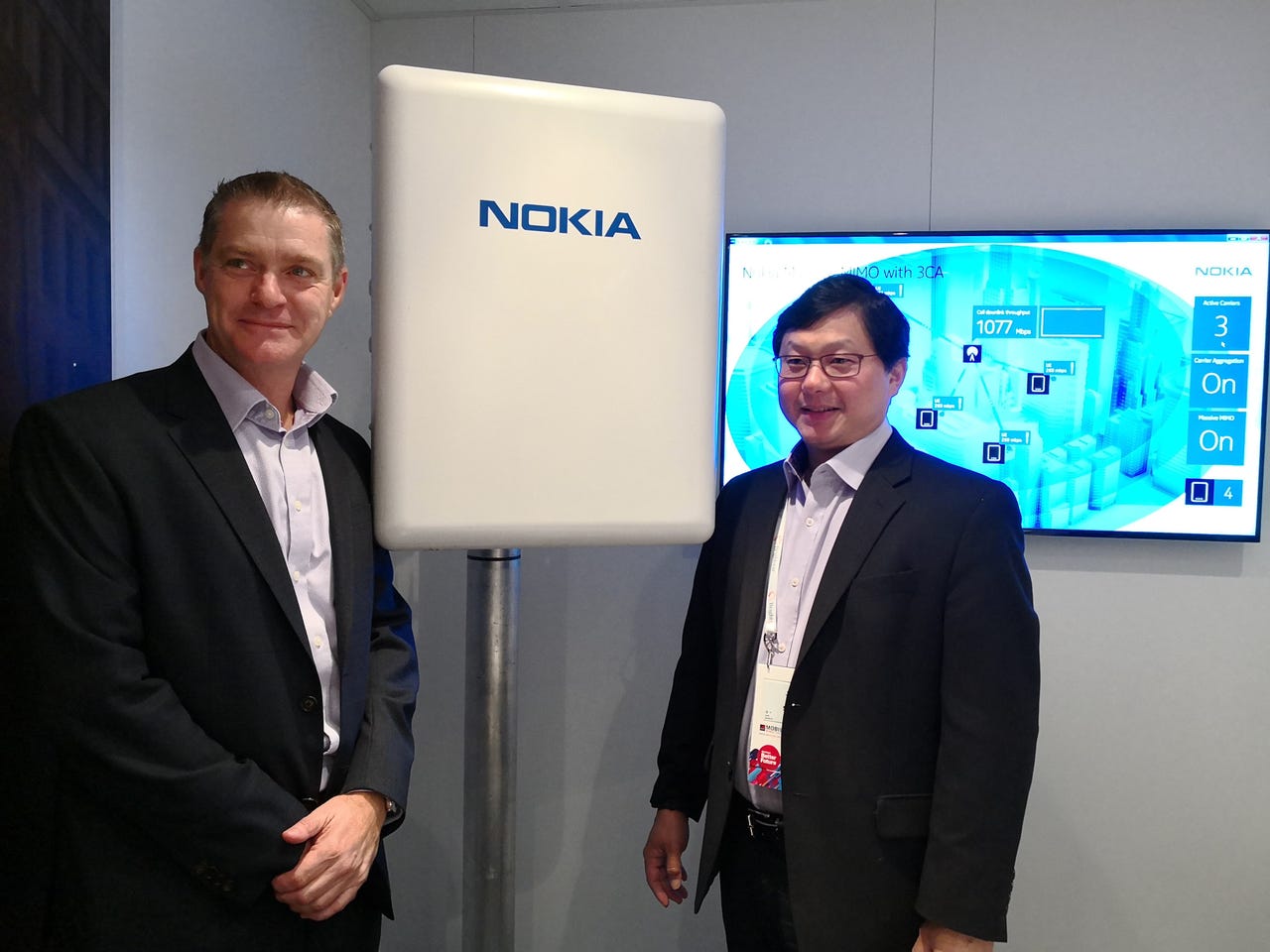Sprint CTO at MWC: We have the best 5G spectrum

Nokia EVP and head of North America Rick Corker and Sprint CTO John Saw
Sprint is showing up to the 5G race with more spectrum than its competitors, CTO John Saw has said, telling ZDNet that the carrier will be naming additional markets for its 5G launch in the coming months.
MWC 2022
Speaking during Mobile World Congress (MWC) 2018 in Barcelona, Saw said Sprint chose its initial six 5G markets of Los Angeles, Washington DC, Atlanta, Chicago, Dallas, and Houston due to their high traffic, and the fact that the carrier holds at least 120MHz of 5G spectrum in those areas.
"Those are big markets. Massive MIMO by itself allows us to add up to 10 times more capacity than a regular LTE site, so you obviously want to put them where you have the most demand, and those are the biggest markets where we have the most customers and the most use," Saw told ZDNet.
"We sat down with partners like Nokia to figure out where do we have a critical mass of sites that we can upgrade, where we know we can move fast on. That's how we picked the first few markets.
"Ultimately, we're going to be naming more markets over the next few months ... we're showing up to this 5G game with I think more spectrum than our competitors."
According to the CTO, the four carriers in the US are trying to "make lemonade out of the lemons they have" in terms of spectrum holdings, with AT&T and Verizon going for millimetre-wave (mmWave) 5G rollouts and T-Mobile going for 600MHz.
"For Sprint, it's going to be focused on our 2.5GHz," he explained, pointing out that the carrier's play involves all licensed spectrum rather than having to elicit help from unlicensed spectrum or licence-assisted access, which he called "unpredictable".
"In 2.5, we have an average of 160MHz of spectrum in our top 100 markets, which is a lot of spectrum. So that gives us flexibility to actually launch LTE and 5G in that band."
Sprint's rollout will involve the deployment of Massive Multiple-Input Multiple-Output (Massive MIMO) across its existing mobile towers this year in order to both improve its LTE and lay the groundwork for 5G.
"We're trying to kill two birds with one stone; we have to densify our networks in 2.5 and add more capacity for LTE, [so] why not put in a radio that is 5G ready?" he said.
"And then a few months later ... we will have software that we can upgrade the radio to and enable what we call a split mode so you have LTE and 5G simultaneously on the site.
"We believe we will have probably a very sizeable 5G footprint compared to our competitors on millimetre wave."
Read also: Top 5G announcements from MWC 2018
Sprint will, however, consider purchasing mmWave spectrum should it go up for auction.
"The technology challenge for us is continuing to shrink this down."
MWC 2018 Coverage
- Sprint 5G coming to LA, DC, Atlanta, Chicago, Dallas, Houston
- MWC 2018: T-Mobile announces 5G for 30 cities
- Top 5G announcements from MWC 2018
- Telstra CEO at MWC: 5G race more than a flag in the ground
- MWC 2018: How the Cisco Jasper Control Center is helping companies with global scalability (TechRepublic)
- Nokia and Windows Phone back from the dead with new models at MWC 2018 (TechRepublic)
- First Android Go phones unveiled at MWC 2018 (TechRepublic)
- Mobile device computing policy (Tech Pro Research)
